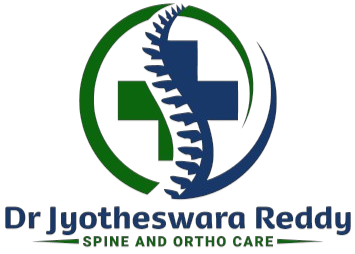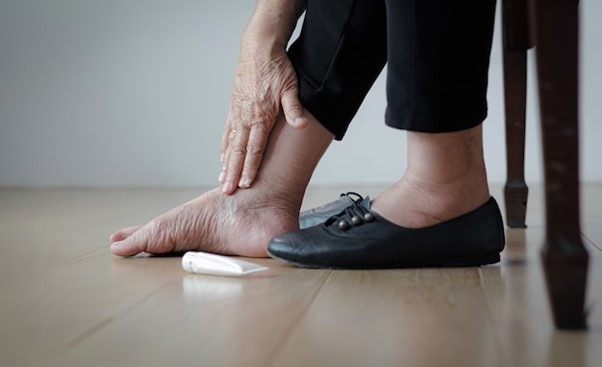Have you been experiencing persistent joint pain, stiffness, and limited range of motion? You may be dealing with bone spurs, also known as osteophytes. These bony protrusions can develop on any bone but are most common in areas subject to frequent wear and tear, such as the spine, hips, knees, and feet.
What are Bone Spurs?
Imagine your joints as smooth, well-lubricated surfaces. Over time, factors like aging, injury, or repetitive stress can cause these surfaces to become rough and develop small, bony growths, which are bone spurs.
Why Do Bone Spurs Form?
While the exact cause is not always clear, several factors contribute to their development:
- Aging: As we age, cartilage that cushions joints wears down, increasing friction and bone-on-bone contact. This can trigger the body to produce extra bone to compensate, resulting in bone spur formation.
- Injury: Trauma to a joint, such as a ligament sprain or fracture , can disrupt the healing process and lead to the development of bone spurs.
- Repetitive Stress: Activities involving repetitive motions, such as certain sports or occupations, can put excessive stress on joints, increasing the risk of bone spur formation.
- Arthritis: Conditions like osteoarthritis, rheumatoid arthritis, and psoriatic arthritis can cause inflammation and damage to joints, contributing to bone spur development.
Do Bone Spurs Always Cause Problems?
Not necessarily. Many individuals develop bone spurs without experiencing any noticeable symptoms. However, issues can arise when bone spurs:
- Compress nerves: Causing pain, numbness, tingling, and weakness.
- Restrict movement: Limiting the range of motion of a joint.
- Interfere with other structures: Press on tendons, ligaments, or other tissues, leading to pain and inflammation.
Common Locations for Bone Spurs
- Spine: Bone spurs may develop on the vertebrae, leading to conditions like spinal stenosis, which can compress the spinal cord and nerves.
- Hips: Hip bone spurs can cause pain and stiffness in the groin, hip, and thigh.
- Knees: Knee bone spurs can develop around the kneecap or along the joint edges, leading to pain and limited range of motion.
- Feet: Bone spurs on the feet, particularly on the heel (heel spurs), can cause pain while walking or standing.
Recognizing the Symptoms of Bone Spurs
The symptoms of bone spurs can vary depending on their location and severity. Common presentations include:
- Pain: Can range from mild discomfort to severe, debilitating pain.
- Stiffness: Difficulty moving the affected joint, especially upon waking.
- Limited Range of Motion: Reduced ability to move the joint through its full range of movement.
- Swelling: Inflammation around the affected joint.
- Numbness or Tingling: If the bone spur is compressing nerves.
- Weakness: If the bone spur is affecting muscle function.
Diagnosis and Treatment
Diagnosing bone spurs typically involves a physical examination and imaging tests such as X-rays, CT scans, or MRIs. Treatment may vary depending on the severity of symptoms and the location of the bone spurs.
- Conservative Measures: Rest: Avoiding activities that aggravate the affected joint.
- Ice: Applying ice packs to reduce inflammation.
- Pain Relievers: Over-the-counter pain relievers can help manage pain and inflammation.
- Physical Therapy: Improving strength,flexibility and range of motion.
- Orthotics: Custom-made shoe inserts to alleviate pressure on the feet.
- Invasive Procedures: In certain cases, more invasive procedures may be considered, such as corticosteroid injections or surgery to remove the bone spur or correct underlying joint problems.
Preventing Bone Spur Formation
While complete prevention may not always be possible, certain measures can help reduce the risk:
- Maintain a Healthy Weight: Excess weight puts extra stress on joints.
- Engage in Regular Physical Activity: Exercise can strengthen muscles and improve joint flexibility.
- Proper Footwear: Wear supportive shoes that fit properly.
- Maintain Good Posture: Proper posture can help reduce stress on the spine and other joints.
- Ergonomics: Ensure your workspace is ergonomically designed to prevent repetitive strain injuries.
If you are experiencing pain or discomfort that you suspect may be related to bone spurs, consulting with a qualified orthopaedic surgeon is essential. Dr. Jyotheswara Reddy is a highly experienced and skilled orthopedic surgeon with expertise in diagnosing and treating various musculoskeletal conditions, including bone spurs. Schedule a consultation with Dr. Jyotheswara Reddy today to discuss your concerns and explore the best treatment options for your specific condition


